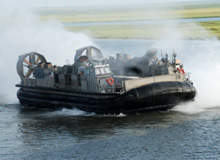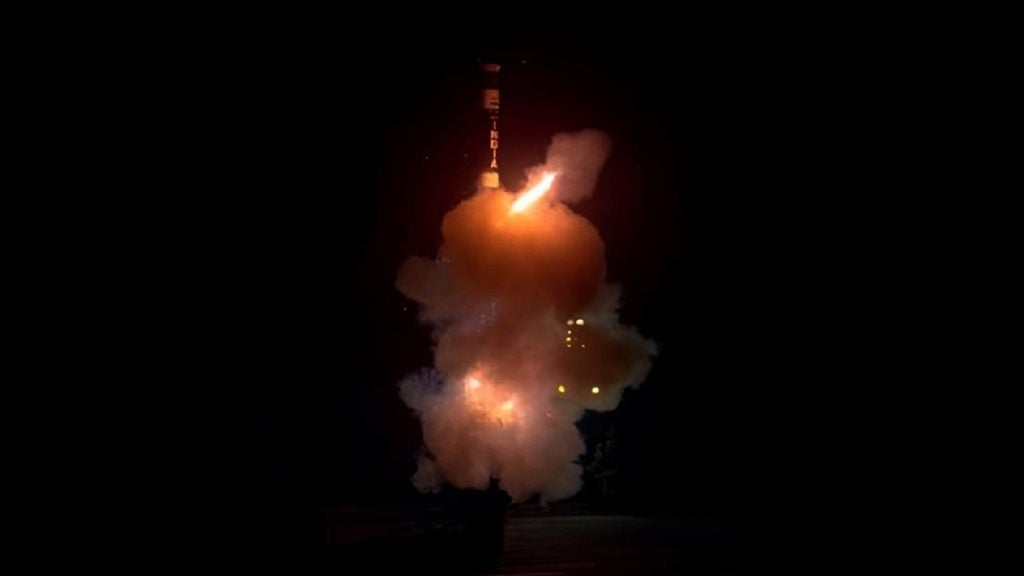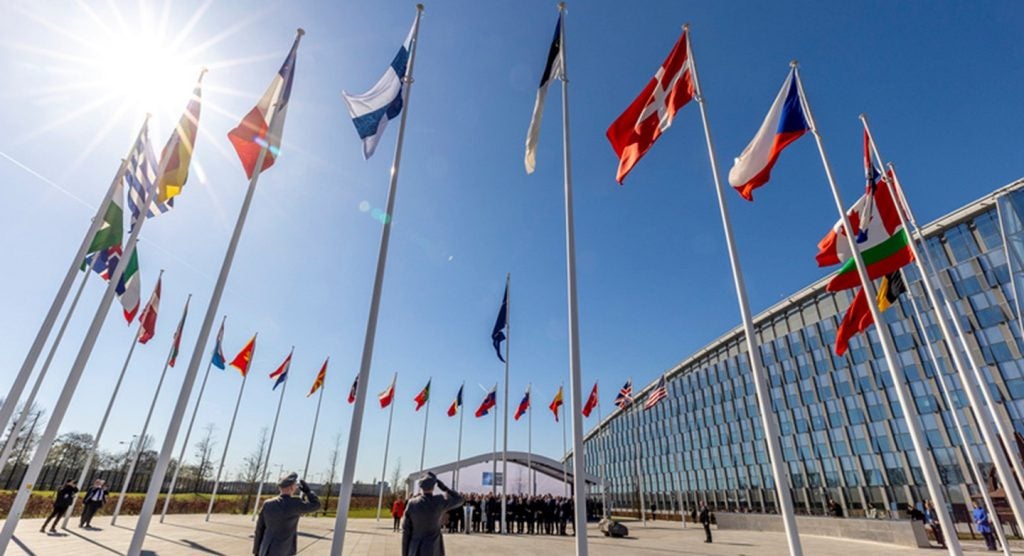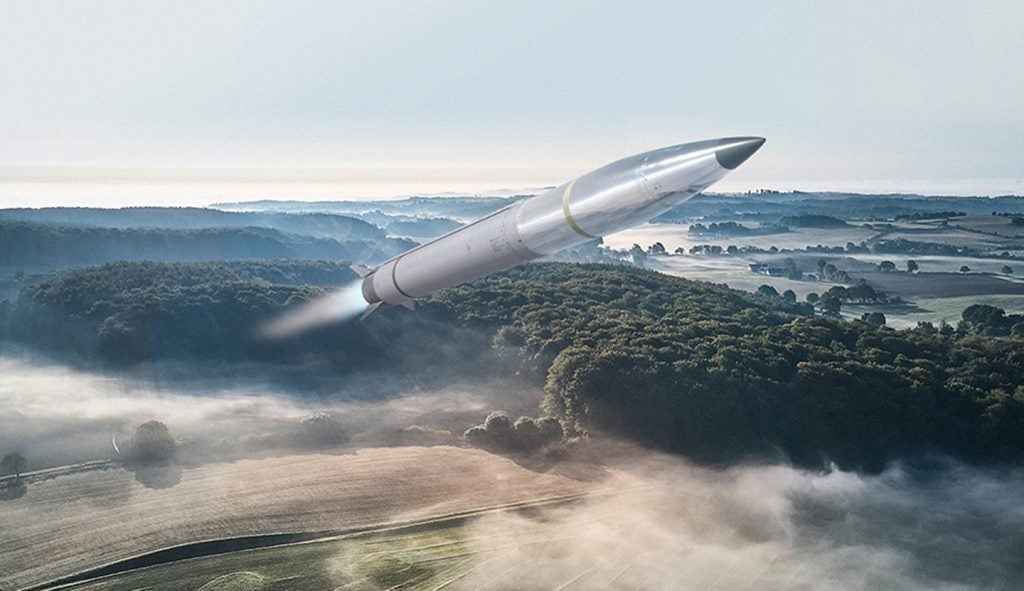
The theory behind watercraft has remained the same for hundreds of years; forces need logistical and combat support for all the functions required for the landing, reception and sustainment of a deployed force.
What has changed over the years is the scale of operations taking place and the advancement of technology involved in making this happen. Most recently, the emergence of high-speed amphibian technology has demonstrated the capability to truly revolutionise the land-to-sea relationship, especially in the arena of special operations.
HIGH-SPEED AMPHIBIAN TECHNOLOGY
Perhaps the most exciting development around at the moment is Gibbs Technologies’ high-speed amphibian (HSA) technology. In the past, there has been a tendency for amphibious cars to look like English cartoonist’s Heath Robinson contraptions glued together by a bunch of boy scouts. No longer is this the case. Gibbs’ HSA technology has been integral in developing a new breed of vehicle that looks more at home in a James Bond blockbuster than a ‘Carry On’ caper.
Three main vehicle types make up the Gibbs portfolio: Aquada, an amphibious car; Humdinga, a four-wheel drive vehicle; and Quadski, a cross between a jet ski and a quad bike. At the push of a button they convert from land to sea. In just 12 seconds the wheels retract and water jets thrust the vehicle through the water.
See Also:
Following interest from the US Department of Defense, Gibbs entered into partnership with Lockheed Martin to adapt its core models for the military sector by integrating command and control capability, armour and weapons systems.
How well do you really know your competitors?
Access the most comprehensive Company Profiles on the market, powered by GlobalData. Save hours of research. Gain competitive edge.

Thank you!
Your download email will arrive shortly
Not ready to buy yet? Download a free sample
We are confident about the unique quality of our Company Profiles. However, we want you to make the most beneficial decision for your business, so we offer a free sample that you can download by submitting the below form
By GlobalDataBased on the Humdinga 4×4, it is now designing a 20ft expeditionary craft capable of 45mph on the water and 80mph on land, and a 35ft river-based craft capable of 40mph on the water and 65mph on land. Additionally, the Terraquad is capable of over 55mph over the water and 50mph on land.
The advantages in military applications are obvious. The seamless link between automotive and marine transportation technologies has provided a groundbreaking solution for special forces. Offering high speeds and versatile in its use, HSA technology looks set to revolutionise the land / sea relationship – not just for the military but also for civil applications.
REMOTE ACCESS AMPHIBIOUS VEHICLE
Primarily a land-based vehicle, the Land Tamer is an amphibious remote access vehicle. While not technically ‘watercraft’, it does come with remote access capability and can potentially be used in special operations support.
About the size of a small car, Land Tamer can be programmed to read the landscape. Using 3D perception of surrounding terrain it can make an informed decision as to whether to carry on or not – if it is unsure of an obstacle in its way it simply ‘reports back’ to an operator. This paves the way for the use of unmanned vehicles in reconnaissance and surveillance missions without risking the lives of combat personnel.
The manufacturers, US-based PFM Manufacturing Inc, are also exploring methods for arming the vehicles with weapons systems to further enhance their capabilities in a combat situation.
AUSTRALIAN WATERCRAFT CAPABILITY
As a major contractor to the Australian Defence Force, Thales Australia (formerly ADI) has long been a key player in the ADF’s watercraft capability. In the pipeline at the moment is phase three of a major programme to increase the amphibious deployment and sustainment capability to support a land force.
Scheduled for 2012 completion, phase three will deliver amphibious watercraft to replace the existing LCM-8 and LCH watercraft used by the ADF. These will operate alongside a new fleet of helicopter and dock landing ships to facilitate ship-to-shore movement of troops and equipment without the need for using fixed ports or prepared landing areas.
Earlier phases saw the delivery of six new watercraft designed for carrying a range of vehicles from Land Rovers to Leopard tanks. Currently in operation, these new watercraft are used for independent operations as well as being an integral part of larger battalion deployment.
The final phases of the project are intended to provide additional capability to support a larger deployed force through the replacement of one amphibious transporter and the acquisition of a strategic lift ship.
When complete, the ADF will have the capability to conduct strategic sealift in support of deployed forces and at the same time significantly improve the ADF’s ability to counter threats in regional waters.
NEW RIGID INFLATABLES FOR FRENCH COMMANDOS
In late 2007, UK-based VT Halmatic delivered the first in a new series rigid inflatable boats (RIBs) to the French Marine Commandos. Based on the Pacific 28 – widely used by the British Royal Navy – the new craft have been developed with a carbon composite hull.
Designed to improve performance this latest offering builds on VT Halmatic’s extensive RIB experience and design. The order will see a total of 19 boats delivered to the French Marine Commandos.
LCAC – LANDING CRAFT AIR CUSHION
Although essentially based on old hover technology, Textron Marine and Land’s LCAC is the backbone of the US amphibious modernisation programme.
Combat proven a multitude of times since initial deployment in the mid-80s, the multi-mission craft has also played a key role in humanitarian relief, most recently with the Hurricane Katrina operations along the Gulf Coast.
Originally delivered with a 20-year expectation, it has already outlived that, and state-of-the-art improvements will ensure it keeps landing on inhospitable shores for at least 20 to 30 years more. A new skirt system, buoyancy modifications, engine upgrades, and complete communications and navigation overhauls have made it the boy racer of the sea – and prove the adage that the old ones sometimes still are the best.
When it comes to technological advancement, the area of special operations is where the great leap forward is taking place. Traditional watercraft – used more for large-scale operations – are moving forward in enabling deployment without the use of fixed ports and landing areas. However, it is the emergence of technology that links the sea-to-shore capability that looks set to open greater possibilities. Particularly for the deployment of special forces, the distinction between land and sea is moving ever closer.






